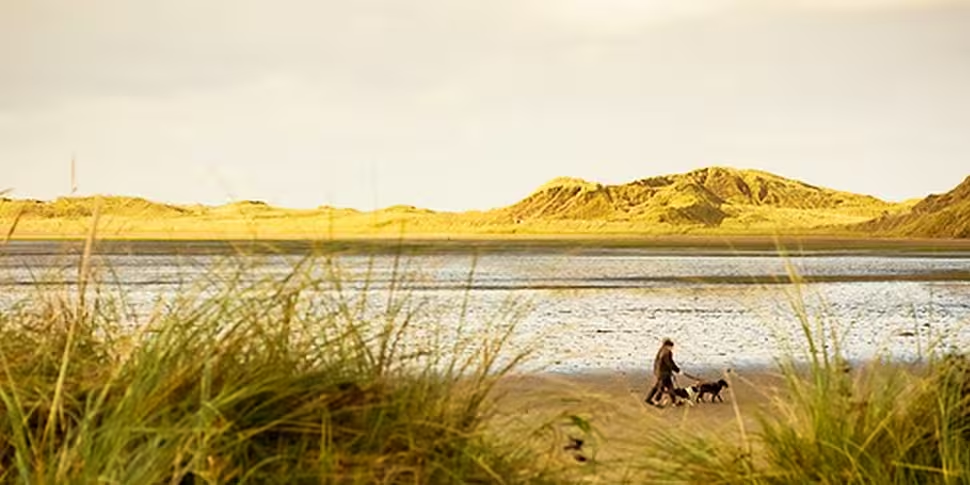County Sligo, lying on the Atlantic coast in the north-west of Ireland, may not be big in size, but in jammed full of culture, history, folklore and beauty as anyone hoping to partake in a ‘staycation’ could hope for. It’s the county packed full of Irish literary lore, having inspired William Butler Yeats to write some of the finest poetry and drama the country has ever seen or heard, and that propelled him to winning the Nobel Prize for Literature.
Yeats’ interests were particularly piqued by mysticism and the county’s other worldliness, but the robust natural beauty of its coastline played its part too.
Despite the county gifting the English-speaking world one of its finest ever writers, the county actually gets its name from a dodgy English pronunciation of the Irish word Sligeach, which means “shelly place”, referring to the copious amounts of shellfish in the region. The county’s historic value, particularly as an example of prehistoric Ireland, is unparalleled, with rocky tombs dotted all over the countryside.
But as modern Irish tourism goes, with incredible surfing, fantastic seafood, and plenty of culture, Sligo is a treat. Here are five of the must-visit things to do in the county...
- Knocknarea Cairn
In a county chockablock with cairns, megalithic feats of engineering used to denote the burial sites of prehistoric peoples, this one is arguably the must-see pile of rocks. The Knocknarea spot is, legend says, the final resting place of Queen Medb, who used to feature on the old Irish £1 banknote before we swapped to the coin 25 years ago today.
Despite the fact that archaeologists believe that a tomb to rival Newgrange’s splendour rests beneath the 40,000 tonnes of stone, the site has never been excavated. It will take you the best part of an hour to walk all the way to the top, though when you get there, the most incredible view of the county and the wild Atlantic Ocean, worthy of royalty, awaits you.

[Flickr/bennybulb]
- Glencar Lough
Not far from Manorhamilton in County Leitrim, this lake is nestled between both counties, and is, you’ll be glad to hear in light of a traditional Irish summer, all the more spectacular when seen after a heavy rainstorm. The lake is best known for its fishing, and especially its waterfall, which was hugely influential in Yeats’ poem The Stolen Child.
While it can be seen from the car, it’s better to walk through the dark and mysterious woods, building up to the romantic vista of the falling water. Pack a picnic, and your wet gear.

[Flick/studio maggio 360]
- Sligo Abbey
Constructed almost 800 years ago, the solemn abbey was destroyed by a fire in the 15th century, only to be rebuilt. A lot remains of the Dominican friary, and the abbey showcases brilliant examples of the preservation of medieval Christendom in Ireland, most notably the cloister and the 15th century high altar, which both survive the destruction of the reformation during the Elizabethan period.
But the abbey packs a sinister punch, as well; the doors at its rear are only a couple of feet high, as the ground around them is so packed with the mass graves of famine victims and the vanquished during the region’s many wars.

[Flickr/WEIYUAN XU]
- The Model
For when you’ve had enough of medieval and megalithic death sites, the Model offers a look at how contemporary culture and art is shaping Sligo. Along with a very impressive collection of works by Jack B Yeats, brother of WB and one of Ireland’s greatest painters, there’s also a great selection of Louis LeBrocquy as well.
Nestled amongst the permanent collections are performance spaces and artist studios, offering some eye-catching and thought-provoking experimental theatre, music, and audio-visual displays.
The café, also, is well worth a visit, as taking in all the culture can work up an appetite.

[Facebook]
- Sligo Folk Park
A charming and engaging look at what rural life in the west of Ireland was like in the 19th century, the whole park works its way around a perfectly restored and carefully maintained cottage. Beneath the thatched roofs of the various buildings resides the history of Irish farming. But it’s not all farming equipment, though; every December, Santa Claus sets up shop and delights boys and girls from all over the country.

[Facebook]









